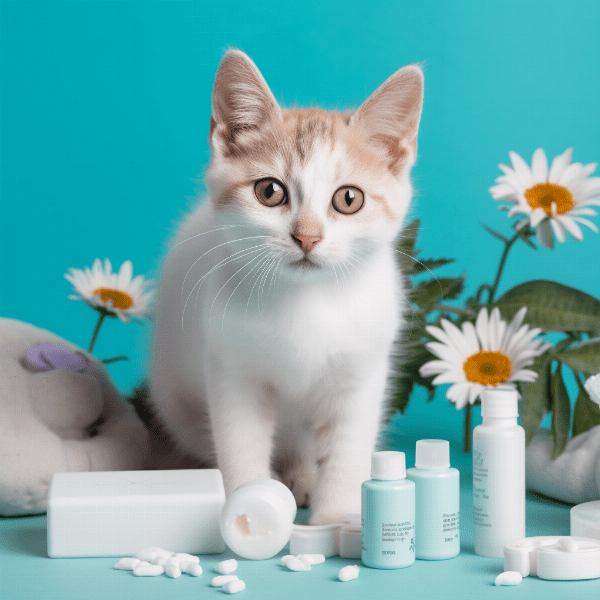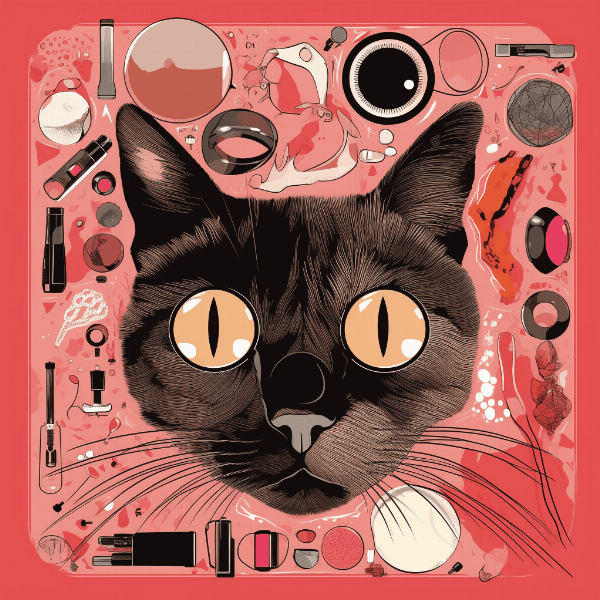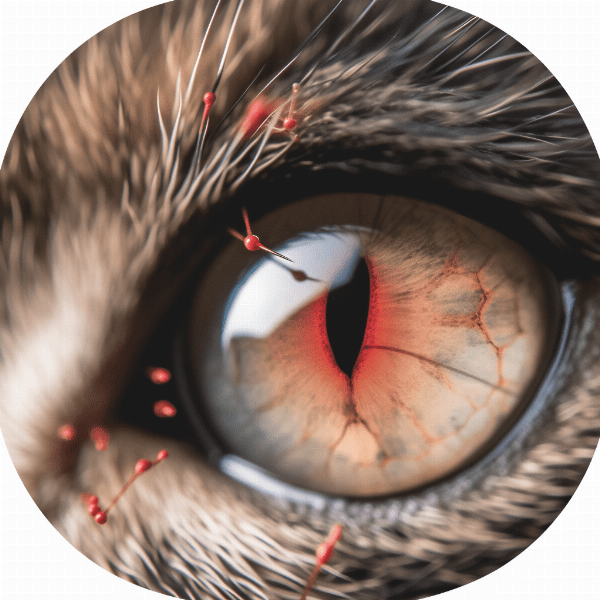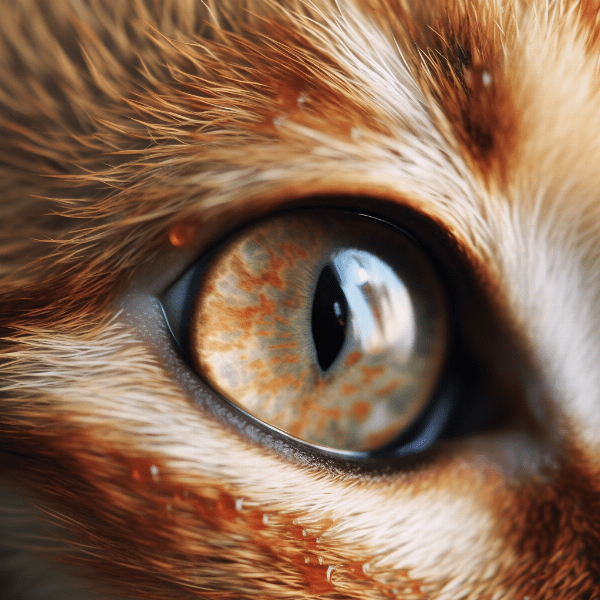Table of Contents
- Understanding Kitten Eye Infections
- Identifying Symptoms of Kitten Eye Infections
- Preparing for Home Treatment
- Cleaning the Affected Eye
- Administering Eye Drops or Ointment
- Providing Comfort Measures
- Preventing Future Infections
- Knowing When to Seek Veterinary Care
- Dealing with Complications
- Conclusion: Caring for Your Kitten’s Eye Health
Understanding Kitten Eye Infections
Kitten eye infections, also known as conjunctivitis, are a common health issue that affects many young cats. This condition is caused by a bacterial or viral infection that inflames the conjunctiva, the thin and delicate membrane that lines the inside of the eyelid and the white part of the eye.
Causes of Kitten Eye Infections
There are several possible causes of kitten eye infections. Bacteria such as Chlamydia and Mycoplasma are common culprits, as well as viruses like herpes and calicivirus. In some cases, an eye infection may be a secondary symptom of a more serious underlying condition, such as feline immunodeficiency virus (FIV) or feline leukemia virus (FeLV).
Risk Factors for Kitten Eye Infections
Kitten eye infections are more common in young cats, especially those under six months of age. Kittens that are housed in unsanitary conditions, have weakened immune systems, or are under stress due to overcrowding or a recent move are at a higher risk of developing an eye infection.
Transmission of Kitten Eye Infections
Kitten eye infections are highly contagious and can be easily transmitted from one cat to another. They can be spread through direct contact with an infected cat’s eye discharge, as well as through contaminated bedding, toys, or food and water bowls. If you have multiple cats, it is important to isolate any cat with an eye infection to prevent the spread of the infection to other cats in your household.
Conclusion
Understanding the causes, risk factors, symptoms, and transmission of kitten eye infections is an important first step in providing effective treatment and preventing the spread of the infection. If you suspect that your kitten has an eye infection, it is important to seek veterinary care as soon as possible to ensure that your kitten receives the appropriate treatment.

Identifying Symptoms of Kitten Eye Infections
Kitten eye infections can be uncomfortable and even painful for your furry friend, and it is important to be able to identify the symptoms of this condition in order to provide prompt and effective treatment.
Visible Symptoms
The most obvious and visible symptom of a kitten eye infection is redness and swelling around the eye, as well as a discharge that may be clear, white, or yellowish. You may notice that your kitten’s eye appears watery and that they blink or squint frequently. In some cases, the eyelid may become stuck together due to the discharge, making it difficult for your kitten to open their eye.
Behavioral Symptoms
Kitten eye infections can also cause behavioral changes in your furry friend. You may notice that your kitten is rubbing their eye frequently, or that they are pawing at their face. Your kitten may also seem more irritable than usual, or may be lethargic and less active than normal.
Painful Symptoms
In some cases, a kitten eye infection can cause more severe symptoms that are indicative of pain or discomfort. Your kitten may be experiencing sensitivity to light, or may be exhibiting signs of pain or discomfort such as whimpering or crying. If you notice these symptoms in your kitten, it is important to seek veterinary care as soon as possible.
Conclusion
Identifying the symptoms of a kitten eye infection is crucial in order to provide prompt and effective treatment. If you notice any of the visible, behavioral, or painful symptoms listed above, it is important to seek veterinary care as soon as possible to ensure that your kitten receives the appropriate treatment and care.

Preparing for Home Treatment
If you suspect that your kitten has an eye infection, it is important to take certain steps to prepare for home treatment. By following these steps, you can help ensure that your furry friend receives the best possible care and is on the road to recovery.
Gather Supplies
Before beginning any home treatment for your kitten’s eye infection, it is important to gather all the necessary supplies. This may include cotton balls or pads, warm water, and a clean towel. You will also need any prescribed medications from your veterinarian, such as eye drops or ointments.
Wash Your Hands
Before administering any treatment, it is important to wash your hands thoroughly with soap and warm water. This will help prevent the spread of the infection and ensure that your kitten stays healthy.
Choose a Quiet Location
When administering treatment to your kitten, it is important to choose a quiet and calm location where your furry friend feels comfortable. This will help reduce any stress or anxiety your kitten may be experiencing and make the treatment process smoother and more effective.
Get Your Kitten Comfortable
In addition to choosing a quiet location, it is important to get your kitten comfortable and relaxed before beginning any treatment. This may involve giving your furry friend some treats or snuggles, or simply allowing them to rest and get used to their surroundings.
Conclusion
Preparing for home treatment for your kitten’s eye infection is an important step in ensuring that your furry friend receives the best possible care. By gathering supplies, washing your hands, choosing a quiet location, and getting your kitten comfortable, you can help make the treatment process smoother and more effective.
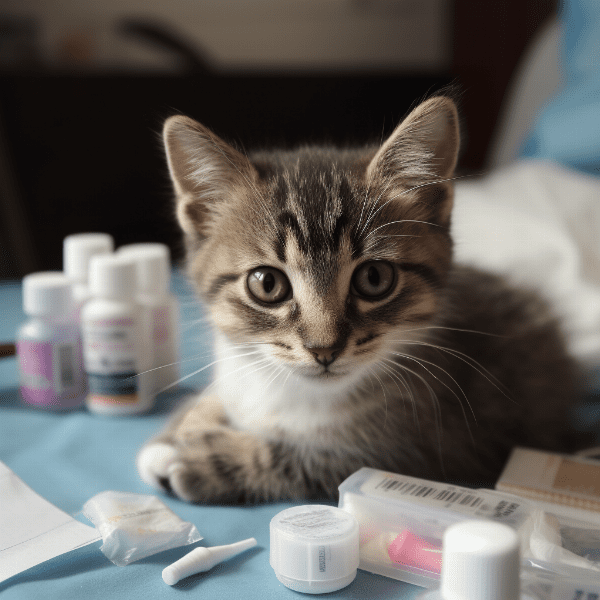
Cleaning the Affected Eye
Cleaning the affected eye is an important step in treating your kitten’s eye infection. By keeping the eye clean and free of discharge, you can help prevent further irritation and promote healing.
Administer Warm Compresses
To begin cleaning the affected eye, you can use a warm compress to help loosen any discharge and make it easier to remove. Soak a clean towel or cotton ball in warm water and hold it gently against your kitten’s eye for several minutes.
Gently Wipe Away Discharge
After administering the warm compress, use a clean cotton ball or pad to gently wipe away any discharge from your kitten’s eye. Be sure to use a new cotton ball or pad for each wipe, and avoid rubbing the eye or applying excessive pressure.
Repeat as Needed
You may need to repeat the warm compress and cleaning process several times a day, depending on the severity of your kitten’s eye infection. Always use a clean towel or cotton ball, and be sure to dispose of any used materials in a sealed plastic bag to prevent the spread of the infection.
Conclusion
Cleaning the affected eye is an important step in treating your kitten’s eye infection. By administering warm compresses and gently wiping away discharge, you can help reduce irritation and promote healing. Be sure to repeat the cleaning process as needed, and always use clean materials to prevent the spread of the infection.
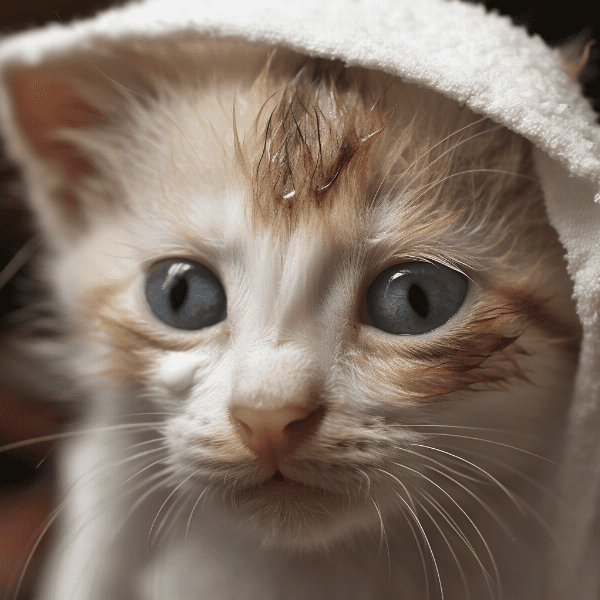
Administering Eye Drops or Ointment
Prepare for Administering Medication
Before administering any medication, it is important to gather all the necessary supplies. This may include the prescribed eye drops or ointment, a clean towel or tissue, and any other supplies recommended by your veterinarian. Make sure to wash your hands thoroughly with soap and warm water before beginning the process.
Hold Your Kitten Steady
When administering medication, it is important to hold your kitten steady to prevent any sudden movements. Gently hold your kitten’s head with one hand, and use the other hand to hold the medication applicator.
Administer the Medication
To administer the medication, gently pull down your kitten’s lower eyelid with one hand, and hold the medication applicator close to the eye with the other hand. Squeeze the prescribed amount of medication into the lower eyelid, being careful not to touch the eye or eyelashes with the applicator.
Massage the Eye
After administering the medication, gently massage the area around your kitten’s eye to help distribute the medication and promote absorption. Use a clean towel or tissue to wipe away any excess medication or discharge.
Repeat as Directed
You may need to administer medication several times a day, depending on the severity of your kitten’s eye infection. Follow the instructions provided by your veterinarian carefully, and be sure to give your kitten the prescribed dosage at the recommended intervals.
Conclusion
Administering eye drops or ointment is an important part of treating your kitten’s eye infection. By holding your kitten steady, administering the medication carefully, massaging the eye, and repeating the process as directed, you can help ensure that your furry friend receives the right dose of medication and gets on the road to recovery.

Providing Comfort Measures
In addition to administering medication and cleaning the affected eye, there are several comfort measures you can take to help your kitten feel more comfortable and promote healing.
Use a Cone or Collar
If your kitten is pawing at their eye or scratching at their face, it may be necessary to use a cone or collar to prevent further irritation or injury. Talk to your veterinarian about the best type of cone or collar for your kitten, and make sure to follow any instructions carefully.
Keep Your Kitten Comfortable
Eye infections can be uncomfortable and even painful for your furry friend. Make sure to provide a comfortable and quiet place for your kitten to rest and recover. You may also want to provide extra cuddles, snuggles, or treats to help your kitten feel more relaxed and comfortable.
Adjust Your Kitten’s Diet
In some cases, adjusting your kitten’s diet may help promote healing and reduce inflammation. Talk to your veterinarian about the best type of diet for your kitten, and make sure to follow any recommendations carefully.
Use a Humidifier
Using a humidifier in your kitten’s living space can help reduce dryness and irritation in the eyes, especially during the winter months. Make sure to clean the humidifier regularly to prevent the growth of bacteria or mold.
Conclusion
Providing comfort measures for your kitten is an important part of treating their eye infection and promoting healing. By using a cone or collar, keeping your kitten comfortable, adjusting their diet, and using a humidifier, you can help your furry friend feel more relaxed and comfortable during their recovery.

Preventing Future Infections
Maintain Good Hygiene
Maintaining good hygiene is crucial in preventing the spread of eye infections. Make sure to wash your hands thoroughly with soap and warm water before handling your kitten or their food and water bowls. Regularly clean your kitten’s living space, bedding, and toys to prevent the growth of bacteria or viruses.
Vaccinate Your Kitten
Vaccinating your kitten against common viruses and diseases can help reduce the risk of eye infections. Talk to your veterinarian about the recommended vaccination schedule for your kitten, and make sure to follow it carefully.
Keep Your Kitten Stress-Free
Stress can weaken your kitten’s immune system and increase their risk of infection. Make sure to provide a comfortable and stress-free living environment for your furry friend, with plenty of toys, scratching posts, and cozy spaces to rest and play.
Monitor Your Kitten’s Health
Regularly monitoring your kitten’s health can help you identify any potential health issues early on, including eye infections. Make sure to schedule regular check-ups with your veterinarian, and be on the lookout for any changes in your kitten’s behavior, appetite, or energy levels.
Conclusion
Preventing future eye infections in your kitten is an important part of maintaining their overall health and well-being. By maintaining good hygiene, vaccinating your kitten, keeping them stress-free, and monitoring their health, you can help reduce the risk of infection and keep your furry friend healthy and happy.
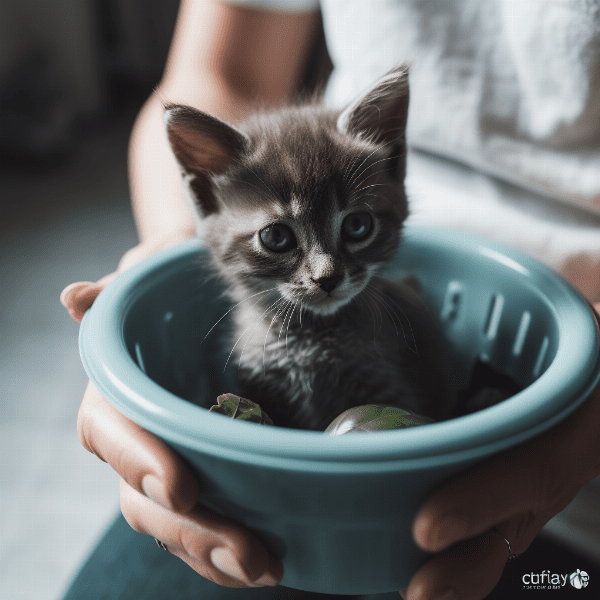
Knowing When to Seek Veterinary Care
While home treatment can be effective for many cases of kitten eye infections, there may be situations where veterinary care is necessary. Knowing when to seek veterinary care can help ensure that your furry friend receives the appropriate treatment and care.
Signs to Look Out For
If your kitten’s eye infection does not improve after a few days of home treatment, or if their symptoms worsen or become more severe, it may be time to seek veterinary care. Other signs to look out for include loss of appetite, lethargy, vomiting, or diarrhea.
Emergency Situations
In some cases, a kitten eye infection can become a medical emergency. If your kitten’s eye appears swollen or bulging, or if they exhibit signs of severe pain or discomfort, it is important to seek veterinary care immediately.
Diagnostic Tests
Your veterinarian may perform diagnostic tests to determine the cause of your kitten’s eye infection, which can help guide treatment decisions. These tests may include a physical exam, a swab of the affected eye, or blood tests.
Treatment Options
Treatment options for kitten eye infections may include medication, surgery, or other interventions. Your veterinarian will work with you to develop a treatment plan that is appropriate for your kitten’s specific needs and condition.
Conclusion
Knowing when to seek veterinary care for your kitten’s eye infection is crucial in ensuring that your furry friend receives the appropriate treatment and care. If you notice any signs of worsening or severe symptoms, or if you are unsure about the appropriate treatment for your kitten’s condition, do not hesitate to contact your veterinarian for guidance and support.
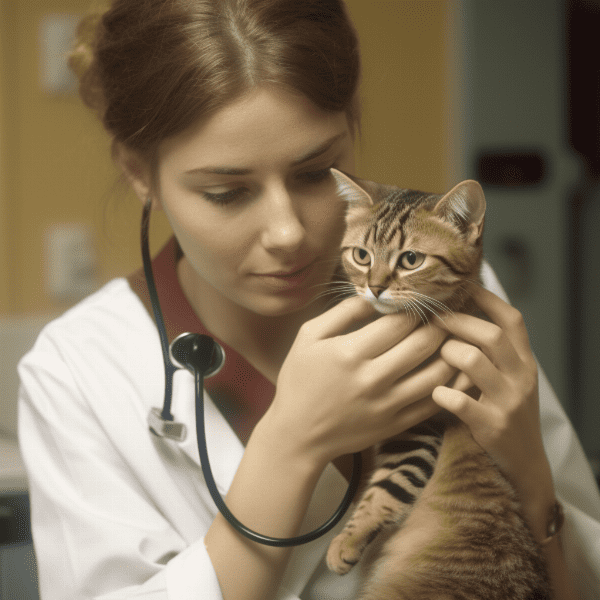
Dealing with Complications
While most cases of kitten eye infections can be treated effectively with home care and veterinary intervention, there may be situations where complications arise. Knowing how to deal with these complications can help ensure that your furry friend receives the best possible care and recovers fully.
Corneal Ulcers
Corneal ulcers are a common complication of kitten eye infections, and can cause vision loss if left untreated. Signs of corneal ulcers include cloudiness or opacity in the eye, discharge, and pain or discomfort. Treatment may include medication, surgery, or other interventions, depending on the severity of the ulcer.
Conjunctivitis
Conjunctivitis, or inflammation of the conjunctiva (the tissue that lines the inside of the eyelid), is another common complication of kitten eye infections. Signs of conjunctivitis include redness, swelling, and discharge. Treatment may include medication, warm compresses, and other interventions as recommended by your veterinarian.
Secondary Infections
Secondary infections can occur when the initial eye infection is left untreated or does not respond to treatment. Signs of secondary infections include fever, lethargy, and swelling or inflammation in the eye. Treatment may include antibiotics, surgery, or other interventions as recommended by your veterinarian.
Follow-Up Care
After treating a kitten eye infection and any associated complications, it is important to schedule follow-up care with your veterinarian. This may include check-ups, diagnostic tests, or other interventions to ensure that your furry friend is fully recovered and on the road to good health.
Conclusion
Dealing with complications of kitten eye infections can be challenging, but by being aware of the signs and symptoms of common complications and seeking veterinary care as needed, you can help ensure that your furry friend receives the best possible care and recovers fully. Make sure to schedule follow-up care with your veterinarian to ensure that your kitten is on the road to good health.
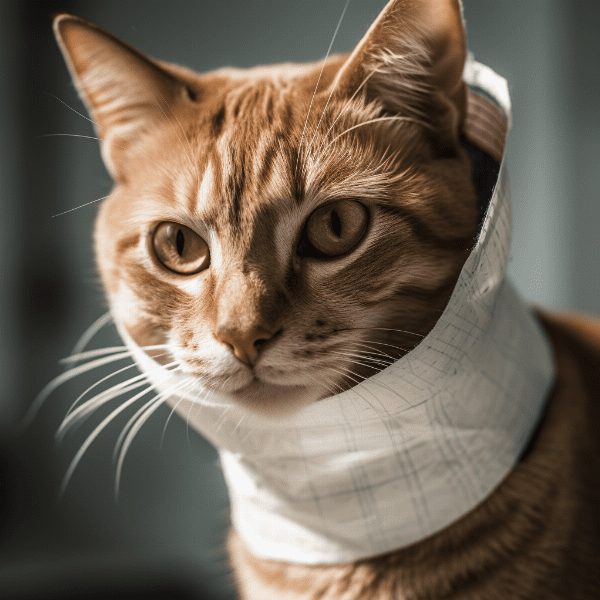
Conclusion: Caring for Your Kitten’s Eye Health
Caring for your kitten’s eye health is an important part of maintaining their overall health and well-being. By understanding the signs and symptoms of kitten eye infections, and taking steps to prevent and treat these infections, you can help ensure that your furry friend stays healthy and happy.
Key Takeaways
Some key takeaways to keep in mind when caring for your kitten’s eye health include:
- Understanding the signs and symptoms of kitten eye infections, including discharge, redness, and swelling.
- Preparing for home treatment by gathering necessary supplies, such as cotton balls, warm water, and medication applicators.
- Administering medication carefully, by holding your kitten steady, pulling down their lower eyelid, and applying the prescribed amount of medication.
- Providing comfort measures, such as using a cone or collar, keeping your kitten comfortable, adjusting their diet, and using a humidifier.
- Knowing when to seek veterinary care, including if your kitten’s symptoms worsen, if they exhibit signs of severe pain or discomfort, or if you are unsure about the appropriate treatment for their condition.
- Dealing with complications, such as corneal ulcers, conjunctivitis, and secondary infections, by seeking veterinary care and following up with appropriate treatment.
Final Thoughts
Caring for your kitten’s eye health can be challenging, but by being proactive, following good hygiene practices, and seeking veterinary care when necessary, you can help ensure that your furry friend stays healthy and happy. If you have any questions or concerns about your kitten’s eye health, do not hesitate to contact your veterinarian for guidance and support.
